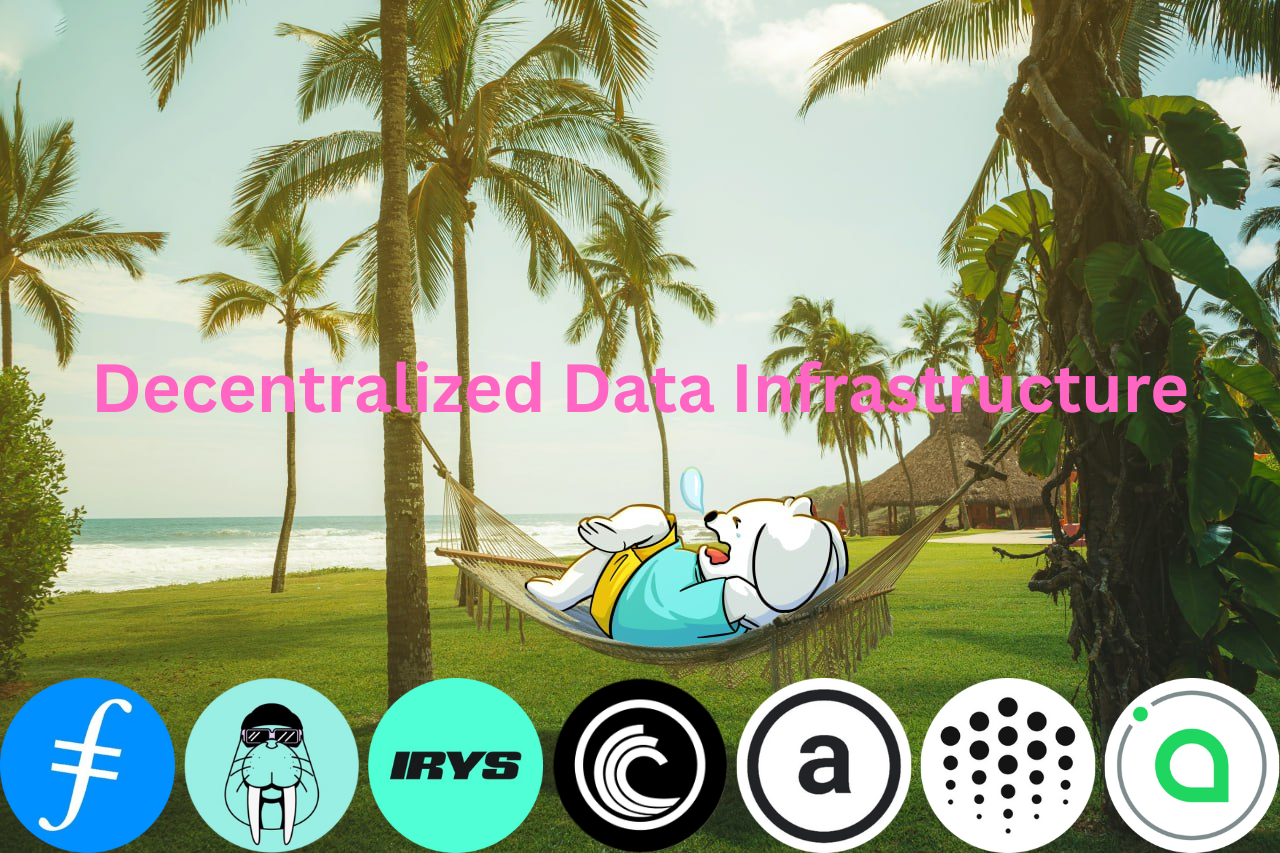Decentralized Data Infrastructure: Comparing Filecoin, Walrus, Irys, BitTorrent, Arweave, Siacoin & Ocean

As blockchains scale and dApps get more complex, there’s one thing that becomes non-negotiable: data. Whether it’s permanent file storage, real-time compute, or on-chain AI — decentralized infrastructure is no longer just nice to have. It’s the backbone.
So who’s building it? Let’s look at seven leading projects reshaping how data is stored, moved, and used in Web3 — and how their designs differ. No fluff. Just what they do, how they do it, and where they stand out.
Filecoin – The Storage Powerhouse
Filecoin is the biggest name in decentralized storage — and for good reason. Built by Protocol Labs, it launched in 2020 as a massive open marketplace where anyone can offer or rent storage.

But it’s more than just storage now. Filecoin is expanding into retrieval markets (for faster access) and compute (for processing data on top of storage). The long-term goal is to create a full suite of decentralized cloud services.
- Use cases: Backup storage, archiving, media hosting, AI/ML compute, IPFS pinning
- Strengths: Global scale, active ecosystem, modular architecture (storage + retrieval + compute)
- Weaknesses: Complex tokenomics, retrieval speeds vary, less tailored for real-time dApps
Walrus – Storage Built on Sui
Walrus is a newer storage layer optimized for Sui, designed for builders working with large files (videos, AI datasets, PDFs). It brings programmable storage on-chain — meaning developers can tokenize and manipulate storage directly in smart contracts.

Files are broken into slivers using their Red Stuff algorithm for faster access and stored across a decentralized network. Proofs of availability ensure files stay up, and storage capacity itself becomes a tradable asset.
- Use cases: Media-heavy apps, file hosting on Sui, on-chain file versioning
- Strengths: High throughput, file composability, low-cost gigabyte storage
- Weaknesses: Sui-native (other chains require workarounds), still early-stage
Irys – More Than Just Storage
Irys isn’t a storage layer. It’s a datachain — a blockchain purpose-built for storing, computing, and exchanging data. That means it handles storage, smart contract execution, and validation all in one place, with no external dependencies.

With native support for both permanent and temporary data, Irys lets developers build apps that directly interact with on-chain data — no separate oracles, no juggling multiple tokens. It’s optimized for durability (200+ years of guaranteed storage) and developer simplicity.
- Use cases: Data-rich apps, programmable storage, analytics on-chain, cross-app data sharing
- Strengths: Unified stack (storage + compute), composable data layer, EVM-compatible IrysVM
- Weaknesses: Newer to market, vertically integrated (not modular if that’s what you need)
BitTorrent – From P2P to Blockchain Infra?
BitTorrent pioneered peer-to-peer file sharing, and its protocol still powers tons of internet traffic. It was acquired by Tron in 2018 and now operates BitTorrent Chain (BTTC) — a cross-chain scaling solution focused on interoperability between EVMs and Tron.

It still offers decentralized file sharing via BitTorrent Speed and BitTorrent File System (BTFS), but the core product direction has shifted toward general blockchain infra.
- Use cases: Legacy P2P, Tron ecosystem tools
- Strengths: Brand recognition, early infra, large user base
- Weaknesses: Less focus on modern data tooling, tied closely to Tron ecosystem
Arweave – Permanent by Design
Arweave was built for one purpose: permanent data. You pay once, and your data lives forever — backed by a storage endowment built into the protocol. That data lives on the Permaweb, a layer for hosting immutable files, documents, and dApps.

Unlike traditional chains, Arweave uses a blockweave, where new blocks reference multiple previous ones — optimizing for permanent storage and network security.
- Use cases: Immutable data storage, public archives, NFTs, publishing, decentralized websites
- Strengths: Proven permanence, mature protocol, permaweb ecosystem
- Weaknesses: Not designed for mutable or dynamic data, storage fees can be steep upfront
Siacoin – Private, Cheap, and Minimal
Siacoin takes a privacy-first, minimalist approach. It creates a storage market from spare hard drive space around the world, splitting files into encrypted shards and spreading them across hosts.

There’s no middle layer, no centralized validator set, and no cloud dependencies — just peers offering capacity and clients buying it. It’s been live for years and runs as a non-profit open-source project.
- Use cases: Private backups, censorship-resistant hosting
- Strengths: Privacy, low cost, robust security assumptions
- Weaknesses: Smaller network, slower dev velocity, limited smart contract capability
Ocean Protocol – AI, But With Data Sovereignty
Ocean Protocol sits at the intersection of decentralized storage, data privacy, and AI. It’s not trying to compete with Filecoin or Arweave — instead, it enables tokenized data access.

With features like Data NFTs, datatokens, and compute-to-data, Ocean lets users buy, sell, and compute on private datasets without actually transferring the raw data. It’s ideal for building AI models while preserving user privacy and ownership.
- Use cases: AI/ML training, secure data monetization, healthcare/enterprise data access
- Strengths: Privacy-first, modular, access control + compute tooling
- Weaknesses: Not meant for raw storage, complex architecture
Final Thoughts
Decentralized data infra isn’t just about saving files. It’s about scaling apps, unlocking AI, and building trustless services across chains.
- Filecoin brings storage to scale with a modular market for data, compute, and retrieval.
- Walrus turns storage into a programmable asset, baked into Sui’s smart contract layer.
- Irys goes full-stack — storage, compute, and execution in one vertically integrated datachain.
- BitTorrent laid the groundwork, now pivoting toward blockchain infra and interoperability.
- Arweave makes data permanent, creating a forever web with zero maintenance.
- Siacoin keeps it lean and private, letting users own their data with no middlemen.
- Ocean enables secure AI by monetizing access to private datasets, not the data itself.
If you’re building the next wave of data-heavy Web3 apps, this is the layer worth knowing.


Comments ()